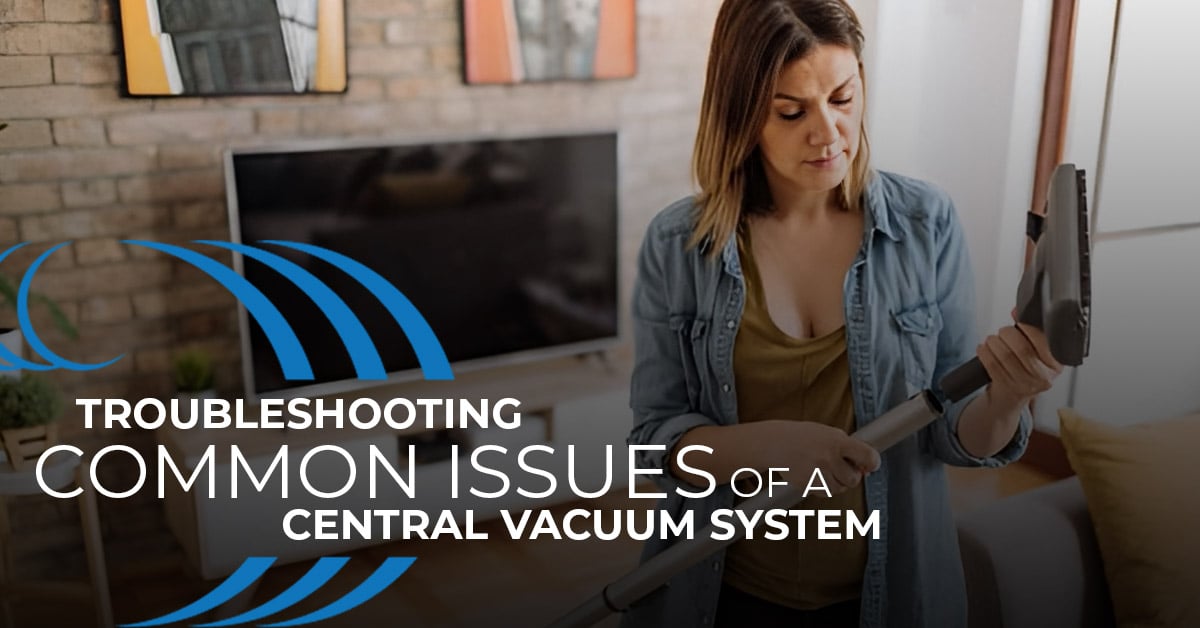
Boosting Productivity in Office Buildings with Central Vacuum
In today’s fast-paced work environment, maintaining a clean and organized office space is crucial for productivity. Office buildings often struggle with keeping their premises clean

Central vacuum systems with dual motors are known for their durability and efficiency. However, like any mechanical system, they can occasionally encounter issues. In this article, we will discuss how to troubleshoot common issues with these systems, provide a repair guide for dual motor central vacuums, and share some vital maintenance tips.
Before you start troubleshooting your central vacuum system, it’s important to understand the basic operation mechanism. A dual motor system has two motors working in tandem to provide powerful suction. Any issue with either motor can impact the system’s overall performance.
Reduced or No Suction: This could be due to a blockage in the hose or the piping system, a full dust canister, or a failing motor. Check for blockages and empty the canister if needed. If the problem persists, consider seeking professional help as the motor might need repair or replacement.
System Not Turning On: This could be an electrical issue. Check if the system is properly plugged in and the circuit breaker hasn’t tripped. If everything seems fine, the issue might be with the motor or the relay switch, which would require professional assistance.
Unusual Noise: If your system is making unusual noises, it might indicate a problem with one of the motors or a blockage. Inspect the system for any visible issues and consider consulting a professional if the noise continues.
Central vacuum systems, especially those with dual motors, are generally reliable. However, they can develop issues over time due to wear and tear, lack of maintenance, or component failure. Common problems include reduced suction power, system not starting, unusual noises, and overheating. Regular maintenance and timely repairs can help mitigate these issues and prolong the system’s lifespan.
When it comes to repairing a dual motor central vacuum system, some simple issues can be handled by homeowners, while others might require professional intervention. Here’s a basic repair guide:
Reduced Suction: Start by checking the dust canister and empty it if necessary. Next, inspect the hose and piping system for blockages. If these steps don’t resolve the issue, consult a professional as the problem might lie with the motors.
System Not Starting: Check the power supply and ensure the unit is properly plugged in. Also, check the circuit breaker. If the system still doesn’t start, it might indicate a problem with the relay switch or the motors, requiring professional help.
Unusual Noises: These often indicate a blockage or a motor issue. Check for blockages in the system. If the noise persists, seek professional help.
Fixing problems in central vacuum systems requires a systematic approach. Start by identifying the issue, then try simple troubleshooting steps like checking the power supply, emptying the dust canister, or inspecting the system for blockages. If these steps don’t work, it’s best to consult a professional to avoid causing further damage to the system.
Regular maintenance is key to keeping your central vacuum system running smoothly. Here are some tips:
Regularly Empty the Dust Canister: Don’t wait for the canister to be completely full before emptying it. A full canister can reduce suction power and strain the motors.
Inspect the System for Blockages: Regularly inspect the hose and pipes for blockages that can impede airflow and reduce suction power.
Clean or Replace Filters: If your system uses a filter, clean or replace it regularly as per the manufacturer’s instructions.
Schedule Regular Professional Check-ups: A professional can thoroughly inspect the system, identify any potential issues, and perform necessary repairs.
In conclusion, while dual motor central vacuum systems are robust and reliable, they can sometimes face issues. Regular maintenance and timely troubleshooting can help keep your system in top shape and prolong its lifespan. If you’re unsure about any issue, it’s always best to consult a professional to ensure proper care and handling of the system.

In today’s fast-paced work environment, maintaining a clean and organized office space is crucial for productivity. Office buildings often struggle with keeping their premises clean

Central vacuums in animal shelters & vet clinic: Explore how these systems boost hygiene, efficiency, and air quality.

In the world of home entertainment, a home theater is a luxury that many homeowners dream of. It’s an immersive experience that brings the magic

A central vacuum system is a significant investment that promises convenience, powerful suction, and improved indoor air quality. However, choosing the right central vacuum hose
Our home automation products are at the forefront of technology, offering a blend of convenience, security, and efficiency. As a Homewave dealer, you’ll be part of a network transforming homes into smart, futuristic spaces.
Embark on this rewarding journey with us and leverage the power of innovative technology.
Please fill out this form and become a Homewave Dealer.